Pastor Responds to Criticism
 Joel Osteen, senior pastor at Lakewood Church in Houston, Texas, has a large following, but he has taken a hit since Hurricane Harvey. Critics say Osteen should have offered his mega-church, which seats 16,8000, to people needing housing after the storm. Instead, Osteen tweeted his prayers, and people say it wasn't enough.
Joel Osteen, senior pastor at Lakewood Church in Houston, Texas, has a large following, but he has taken a hit since Hurricane Harvey. Critics say Osteen should have offered his mega-church, which seats 16,8000, to people needing housing after the storm. Instead, Osteen tweeted his prayers, and people say it wasn't enough.
Church officials said the building experienced "severe flooding," but pictures told a different story. In TV interviews, Osteen defended the church's practices. He said, "The main thing is, the city didn't ask us."
In an article on PR Daily, Brad Phillips raised the issue of authenticity:
If you're cynical about televangelists, Osteen's tone in the Today show interview probably struck you as smarmy and self-satisfied. If you're one of the millions of people who watch his sermons and read his books, you probably viewed him as sincere.
Phillips also questioned why the church didn't have plans in place and, specifically, why the leaders didn't coordinate with Houston city officials ahead of time.
The social media response has not been kind: memes abound.
Discussion:
- What's your view of the church's actions during and after the hurricane?
- How well did Osteen respond to criticism? What are his main arguments? Which are strongest, and which fall short?
- Given Phillips' question about Osteen's authenticity, how do you view his interview on the Today show?
- What's your view of the social media response and memes: cruel, justified, or something else?
- How do your own religious beliefs or practices influence your assessment of the situation and of Osteen, particularly?
Airbnb Steps Up During Hurricane Harvey
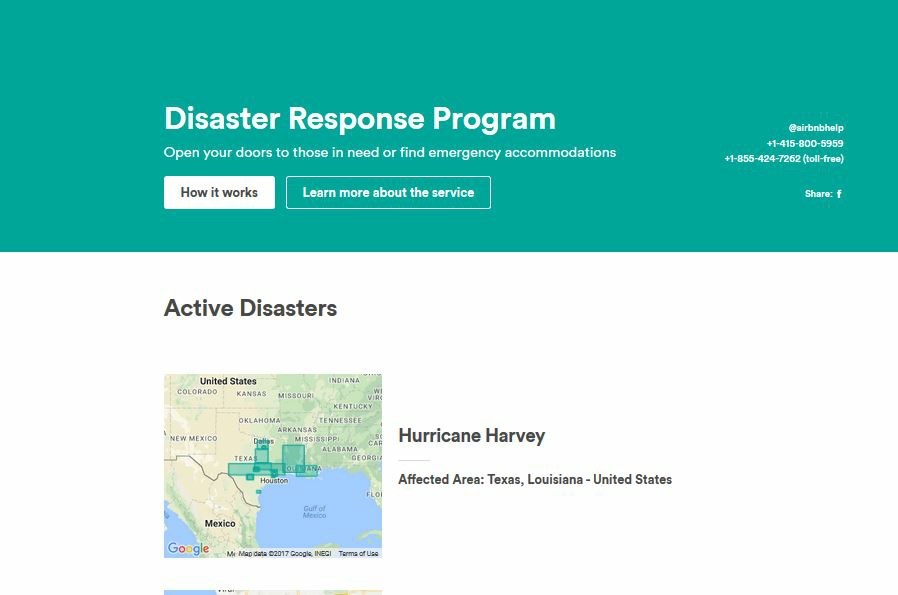 Airbnb is offering free rooms for people who had to leave their homes because of Hurricane Harvey. Evacuees won't have to pay fees to hosts through September 25. Originally, the offer was through September 1, but the company extended it after seeing the storm's devastation. Free listings appear for homes in Houston, Dallas, Austin, and San Antonio.
Airbnb is offering free rooms for people who had to leave their homes because of Hurricane Harvey. Evacuees won't have to pay fees to hosts through September 25. Originally, the offer was through September 1, but the company extended it after seeing the storm's devastation. Free listings appear for homes in Houston, Dallas, Austin, and San Antonio.
Conditions are explained on Airbnb's Disaster Response site. Currently, the site lists programs for Hurricane Harvey and for the Mumbai floods.
Other sharing companies have stepped up following the hurricane. Uber, Lyft, and WeWork are offering free services and other promotions.
Discussion:
- What examples of generosity have you seen during Hurricane Harvey?
- How should a small business owner decide what to offer? What are the advantages and disadvantages of, for example, a restaurant offering free food?
Companies Criticized for Price Gouging
As Texans are desperate for housing and food in the aftermath of Hurricane Harvey, some companies are taking advantage. People reported hundreds of examples of price gouging for items like bottled water, groceries, gas, and hotel rooms. 
A Best Buy near Houston was selling a case of water for $42; others reported prices up to $99. Price gouging is illegal after natural disasters, as the Texas attorney general's site explains.
Best Buy issued a statement that this was the act of one store.
A Best Western in Robstown was also over-charging: $321.89 a night compared to its usual price of $119. In addition to raising the room rate, the hotel added extra fees. The PR manager for Best Western's corporate office issued this statement:
"Best Western was founded on the principles of honesty, integrity, compassion, and service. We are deeply offended and saddened by the actions taken by this hotel. As a result, we are immediately severing any affiliation with the hotel. This hotel's actions are contrary to the values of Best Western. We do not tolerate this type of egregious and unethical behavior."
The hotel has been removed from Best Western's website.
Discussion:
- What's your view of raising prices during disasters? How is this different from revenue management?
- Analyze Best Buy's statement. How well does this meet audience needs and communication objectives?
- Did Best Western do the right thing in severing the hotel from the company? What will be the consequences of this action?
Uber Announces New CEO
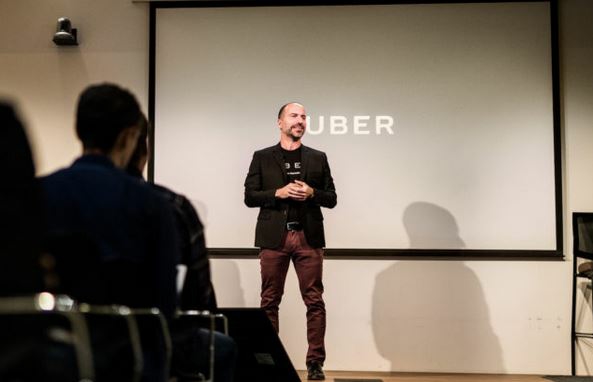 Uber hired Expedia Chief Executive Dara Khosrowshahi to replace founder Travis Kalanick. Khosrowshahi is seen as a stable force, which is needed at Uber after many months of controversy. In addition to his role at Expedia, Khosrowshahi is on The New York Times board of directors.
Uber hired Expedia Chief Executive Dara Khosrowshahi to replace founder Travis Kalanick. Khosrowshahi is seen as a stable force, which is needed at Uber after many months of controversy. In addition to his role at Expedia, Khosrowshahi is on The New York Times board of directors.
The news was announced today in major newspapers, but as of 4:30 pm, the company hadn't posted a statement on its news site or on Twitter. A Bloomberg interview says the news is "still under wraps," although it was all over Twitter and other social media sites.
Finally, the company posted a message sent to employees from the board of directors:
Team,
We are delighted to announce that Uber's Board has voted unanimously to appoint Dara Khosrowshahi to be our new CEO.
Dara came to America at nine years old when his family escaped Iran on the eve of the Iranian Revolution. He grew up in Tarrytown, N.Y., trained as an engineer at Brown, and spent many years at IAC serving as Chief Financial Officer and in various operational and strategic roles.
In 2005, he became CEO of Expedia, which he built into one of the world's leading travel and technology companies, now operating in more than 60 countries. He has four children and not surprisingly loves to travel, one of his favorite trips being to the Angkor Wat temples in Cambodia where his wife Sydney said yes to marrying him.
We're really fortunate to gain a leader with Dara's experience, talent and vision. The Board and the Executive Leadership Team are confident that Dara is the best person to lead Uber into the future building world-class products, transforming cities, and adding value to the lives of drivers and riders around the world while continuously improving our culture and making Uber the best place to work.
Dara will be joining us tomorrow, August 30, for an All Hands. Add your questions for Dara here, and stay tuned for a calendar invite with more details. He'll also be meeting with employees around the world in smaller groups over the next few weeks, and spending time with drivers.
Please join us in welcoming Dara on what promises to be an exciting ride!
-Yasir, Garrett, Matt, Ryan, Arianna, Travis, Wan Ling & David
The message is unusually personal for a CEO introduction, drawing on Khosrowshahi's immigrant past and family life.
The website also now includes "Highlights from Today's Company Meeting," where Khosrowshahi was introduced and talked about himself, again, in a more personal way than we usually hear from a chief executive. He also says, several times, he's not about "B.S."
Discussion:
- Why would the company take this personal approach in introducing its new leader?
- Khosrowshahi clearly is trying to come across as authentic. Is he succeeding?
- When people say, "I am not going to B.S. you," I think that they will. To me, it's like saying, "I'll be honest with you." Why would you be anything else? Do you share this view or not?
How Not to Apologize
 The owner of a bar in Crown Heights, Brooklyn, has faced her critics but didn't handle the apology well. Former corporate tax attorney Becca Brennan wrote a press release encouraging people to visit her new bar and photograph the wall of bullet holes.
The owner of a bar in Crown Heights, Brooklyn, has faced her critics but didn't handle the apology well. Former corporate tax attorney Becca Brennan wrote a press release encouraging people to visit her new bar and photograph the wall of bullet holes.
It was a bad joke: the holes weren't from bullets. Brennan played on previous violence in a gentrifying neighborhood. The NY Eater summarizes the issue:
Nostrand Avenue between Eastern Parkway and Atlantic is quickly gentrifying, and increasingly, bars and restaurants targeting young and primarily white new residents have opened. Summerhill may be the first business to capitalize on historic violence and poverty in Crown Heights as a point of the decor - making it an easy lightning rod for existing tensions.
Neighbors took offense, and some considered the promotion racist. Brennan issued an apology:
"I truly never meant it in that way, but I recognize that it was insensitive. I was excited to keep the wall as a shout out to the different businesses that occupied the space before us, but my intention was misinterpreted, and I'm sorry for that."
A month later, a town hall meeting was supposed to ease tensions but didn't. In response to criticism, Brennan said, "I'm sorry I have a sense of humor," and "I'm very sorry you were offended." These are classic mistakes in apology.
From her perspective, Brennan can't say anything right. She told reporters, "I mean, you see me try to talk, and nothing I say will ever be good enough." At the same time, she refuses to cover the damaged wall.
Discussion:
- What makes a good apology, and how did Brennan's fall short?
- What would you suggest for Brennan to demonstrate vulnerability?
- Should she cover the damaged wall or stick to her plan, as she says, to "keep the integrity of an 100-year-old building"?
- At this point, how, if at all, can she improve relations with neighbors?
Comms About Hurricane Harvey
 As Texas prepares for Hurricane Harvey, government officials and news organizations are preparing communications to help:
As Texas prepares for Hurricane Harvey, government officials and news organizations are preparing communications to help:
- President Trump issued a statement about monitoring the storm and encouraging people to evacuate if they are in the Hurricane's path. The president is also tweeting about the storm.
- His statement points to Ready.gov, a website rich with resources for preparing families in case of flooding, hurricanes, or extreme heat.
- CNN's website shows live updates of the storm's path.
- The National Hurricane Center is posting coastal warnings and a visual of the cone.
- Texas Governor Greg Abbott was interviewed by BBC and is hosting a meeting to plan emergency operations. (His website includes a tweet but nothing else yet about the storm.)
And, of course, the media is covering the storm with bold headlines:
- "Major disaster" (BBC)
- "Monster storm" (Washington Post)
- "Could be much worse than Sandy" (NY Post)
Discussion:
- Explore Ready.gov. What do you notice about the key messages, organization, and use of visuals? How easy is it to find information?
- Ready.gov, as of now, doesn't feature Hurricane Harvey; it's generic. Should the site be updated to feature the storm? Why or why not?
- Also explore Governor Abbott's website. Does this site feature the hurricane yet? How do you think the hurricane should be positioned here?
Air Canada CEO Gets Defensive
 No one wants to face a reporter's tough questions, but it's best to handle them gracefully. Air Canada's CEO and president Calin Rovinescu got angry during an interview with a Globe and Mail reporter, and it didn't end well.
No one wants to face a reporter's tough questions, but it's best to handle them gracefully. Air Canada's CEO and president Calin Rovinescu got angry during an interview with a Globe and Mail reporter, and it didn't end well.
Rovinescu was asked about bumping a 10-year-old boy when a flight was overbooked, and he responded,
No. I'm not getting into specific customer dynamics with you, Trevor. And that's not what I expected this interview to be about, and I'm happy to end it here if that's-I'm not getting into discussions with respect to specific customer experiences.
The interviewer then asked Rovinescu about weather planning because of climate change, and he was a bit sarcastic, saying they can't do anything to control the weather. Things seem to get worse when the interviewer pushed him about an incident in July, when a plane almost collided with others on the taxiway:
Can you talk to me about pilot error? Just in terms of-
Trevor, I'm not sure I'm loving the direction of your interview here. I thought we were talking about a more generic dynamic around what the airline has achieved.
Instead, Rovinescu could have used the technique of "bridging," or transitioning from the interviewer's question to something more positive about the airline's safety record or plans for the future. He sounded defensive throughout, and the interviewer took advantage by asking tougher questions.
Rovinescu wanted to avoided seeming vulnerable-risking emotional exposure-which just made him more vulnerable and open to harm. A PR Daily article summarizes the issue well:
[Rovinescu] reacted to Cole's questions instead of answering them-and by doing so, unnecessarily increased the negative tone of the article.
Discussion:
- Read the reporter's questions. How could Rovinescu have responded to each instead?
- Did the reporter push too much? Were his questions unfair?
Is Poland Spring Water from Poland Spring?
A consumer lawsuit accuses Pepsi of falsely promoting Poland Spring Water. The product is marketed as "100% Poland Spring water," but the plaintiff group of 11 say it's really ground water. The company is accused of false advertising and misleading customers, and the plaintiffs seek $50 million in damages.
According to the Food and Drug Administration (FDA), spring water has a specific definition: "Spring water shall be collected only at the spring or through a bore hole tapping the underground formation feeding the spring. There shall be a natural force causing the water to flow to the surface through a natural orifice." Although a Poland Spring did exist in Maine, according to the suit, it dried up almost 50 years ago.
The accusations are an issue of behavioral integrity, as my colleague Tony Simons defines it: doing what you say you will do. In other words, does Nestle Water promise something it doesn't deliver?
Nestle Waters denies the claims. In response to the suit, the company created an extensive web page with a brief statement, two videos, and an infographic. The statement reads as follows:
For more than 170 years, Poland Spring® has delivered great tasting spring water from Maine to millions of people in the Northeast. The claims made in the lawsuit are without merit and an obvious attempt to manipulate the legal system for personal gain. Poland Spring® is 100% spring water. It meets the U.S. Food and Drug Administration regulations defining spring water, all state regulations governing spring classification for standards of identity, as well as all federal and state regulations governing spring water collection, good manufacturing practices, product quality and labeling. We remain highly confident in our legal position.
They are taking a strong approach to counter the claims, and they accuse the plaintiffs of seeking personal gain. One of the videos, only 30 seconds, demonstrates principles of persuasion: emotional appeal, logical argument, and credibility.
Discussion:
What elements of persuasion (pathos, logos, ethos) do you find in the video example? What other communication strategies does Nestle Water use on its web page?
Analyze the full infographic from this page. What communication design principles does the infographic illustrate? How could it be improved?
Given what little we know so far about the case, what's your view? Do you side more with the plaintiffs or with Nestle Water?
Martin Shkreli's Failed Communications
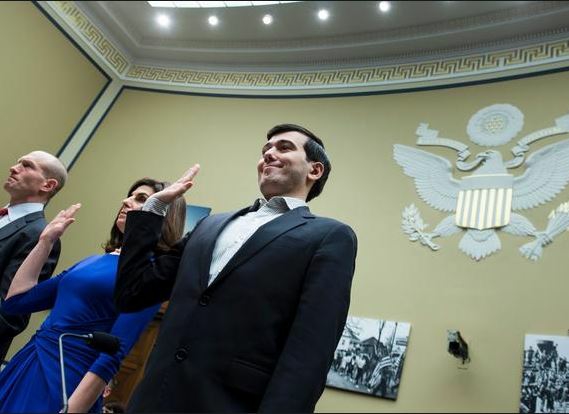 Former pharmaceutical executive Martin Shkreli damaged his own case by failing basic communication principles. As a juror said, he is "his own worst enemy" and "All he had to do was to tell everyone, ‘I'm sorry, I lost the money, all I can say is I'm sorry,' and that would be it."
Former pharmaceutical executive Martin Shkreli damaged his own case by failing basic communication principles. As a juror said, he is "his own worst enemy" and "All he had to do was to tell everyone, ‘I'm sorry, I lost the money, all I can say is I'm sorry,' and that would be it."
In other words, just apologize. The jury found him guilty of fraud because he lied to hedge fund investors.
Throughout his career in the media, Shkreli came across as arrogant and indifferent to his impact on others. His company hiked the price of Daraprim, a potentially life-saving drug, from $13.50 to $750 per pill. A Daily Beast article called him "reprehensible" and worse.
In 2014, he tweeted about his board of directors:
Rather upset at my inane BOD who was overly focused on irrelevant innuendo but also now can pursue a NewCo without them. So net-net excited.
In January of this year, Shkreli was banned from Twitter for harassing a journalist. In 2016, he testified before Congress, and we see why people consider him offensive. He "takes the fifth," which is his right, but his behavior shows his lack of compassion. MoneyWatch posted "The many smirks of Martin Shkreli" during the hearing.
Discussion:
- What is the value of an apology, and how could saying "I'm sorry" have helped Shkreli?
- What non-verbal behavior does Shkreli demonstrate? For example, watch 8:00 - 9:00 of the Congressional hearing. How do you interpret his non-verbals?
Gender Bias in Economics
 An economist's research has revealed gender bias among academics. A gutsy senior wrote her thesis at the University of California, Berkeley, based on online, informal conversations about the economics academic job market. By analyzing more than a million online comments, Alice Wu identified words associated with men and women.
An economist's research has revealed gender bias among academics. A gutsy senior wrote her thesis at the University of California, Berkeley, based on online, informal conversations about the economics academic job market. By analyzing more than a million online comments, Alice Wu identified words associated with men and women. 
Words associated with women (female pronouns) were far more sexual, while the words associated with men were more positive overall. The female list is jarring.
Wu took a big risk in doing this research and publishing her report. She was warned about facing online harassment, but she seems resolved to continue her work.
The organization hashtac compiled an extensive list of studies about gender bias in academe and conclude the following:
The studies aggregated and summarized below offer important policy implications for the traditional ways that we quantify the processes leading to hiring, promotion, and tenure. You cannot simply count "outputs" in making an evaluation of someone's worth and reputation if there is a "biased filter" at the first stage of evaluation, prejudicing judgment at the outset.
Discussion:
- What, if anything, surprises you about this research?
- How does this work relate to the concept of implicit bias discussed in Chapter 2 of the tenth edition of Business Communication?
- Wu certainly demonstrates courage. What is at risk for her personally and professionally?
- Despite several page views, I cannot find what the letters "hashtac" represent. Where on the website would be a good place for this?
Corona and Other Brands Capitalize on Eclipse
With the total eclipse coming Monday afternoon and glasses hard to come by, Corona is offering a solution. In a 35-second video, the company instructs us how to make a viewer from a beer box.  Apparently, solar corona is the beer's namesake, so the connection isn't entirely random. Ad agency Cramer-Krasselt created the campaign.
Apparently, solar corona is the beer's namesake, so the connection isn't entirely random. Ad agency Cramer-Krasselt created the campaign.
NASA Goddard posted a video to show how to make a viewer out of a cereal box, and a generic box is used as an example. But other companies have been using the eclipse to promote their brands.
A CNBC article identifies "17 clever ways brands are cashing in on the eclipse." Volvo, for example, designed a custom moon roof for viewing the eclipse from the road, but reports warn about traffic and accidents if people aren't careful while driving. Other companies are selling drinks, mattresses, train rides, houses, and a variety of food: half-moon cookies, donuts, pizza, and more.
Discussion:
- What are potential downsides of a brand associating with the eclipse and using the event to promote products?
- What is the most outrageous promotion you have seen related to the eclipse?
Brother's Response to My Complaint
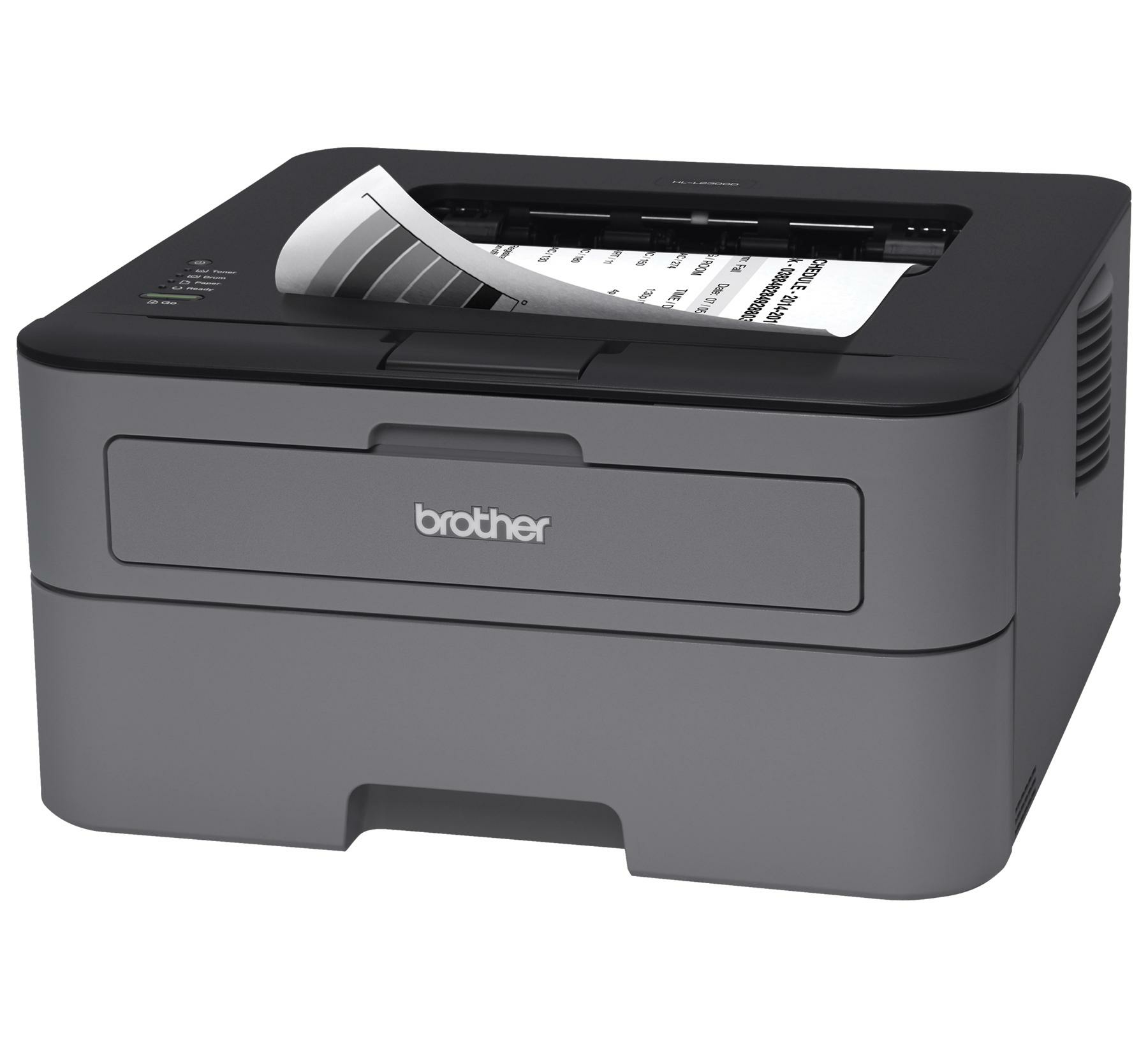 On my Brother printer, the "Toner Low" light came on, and I shook the toner, which always gives me several more pages of good quality printing. But at some point, the printer wouldn't print anymore. To my eye, the pages still looked good. I was printing pages of my new book to proofread and didn't notice a difference for my purpose.
On my Brother printer, the "Toner Low" light came on, and I shook the toner, which always gives me several more pages of good quality printing. But at some point, the printer wouldn't print anymore. To my eye, the pages still looked good. I was printing pages of my new book to proofread and didn't notice a difference for my purpose.
I emailed Brother to see if I could override the function and get more out of my cartridge. (Replacements cost about $50.) I saw several YouTube videos with instructions, so clearly I'm not the only one who has this idea. But I couldn't find my model. I asked Brother for help, and this is the response I received: download Brother printer response.
I appreciate that the purpose is up front in the email and that my question is answered. But the email is so long and not very well organized. Also, the writer spends a lot of time defending why the printers are set up to stop. Of course, quality is important, but shouldn't I get to decide what is "good enough" for my print jobs? My HP printers keep going until they're grey and streaked.
Discussion:
- What's your view of the function to stop printing? Am I just cheap, or should Brother avoid the shutoff?
- What are the communication objectives for Bother's response? What is important for a customer in this situation?
- How could the writer have organized the email differently?
- How clear are the instructions?
- What else would improve the message?
Email Persists
 A survey shows that CIOs (73%) and office workers (53%) agree that email will continue as the primary internal communication tool through at least 2020. When instant messaging became popular around 2004, analysts predicted it would outpace email, which obviously hasn't happened. Reports of email's demise were common until about 2010, when people may have realized how stubborn the technology is.
A survey shows that CIOs (73%) and office workers (53%) agree that email will continue as the primary internal communication tool through at least 2020. When instant messaging became popular around 2004, analysts predicted it would outpace email, which obviously hasn't happened. Reports of email's demise were common until about 2010, when people may have realized how stubborn the technology is.
Email's persistence isn't because it's a great tool. According to the MediaPost survey, CIOs did rate email best for daily communications (41%), but this is compared to other channels: in-person meetings (22%), instant messaging (13%), phone calls (9%), internal social networks (8%), and video conferencing (7%). I would argue that the channel depends on the purpose and audiences. Otherwise, this is a difficult question to answer.
The survey reporters criticized instant messaging because people expect an immediate response. But, again, this doesn't consider that IM has a different purpose and will often solve immediate problems. Academic research shows that people who use IM, perhaps paradoxically, feel they have more control over their work, possibly because they get work accomplished through IM instead of having to wait longer for an email response. Then again, in some circles, people are expected to respond to email immediately as well.
Discussion:
- What's your view of email compared to other communication tools, such as, instant messaging?
- What's the real value of email compared to other tools? Why do you think it has persisted?
- What's your biggest frustration with email?
- What, if any, tools, such as Slack, have you used to help manage email? What have you found helpful?
Comparing CEO Statements
 A writer for The New York Times doesn't condemn CEOs for leaving President Trump's business advisory councils, but she says that we should expect more, particularly from those who gave what she considers vague statements. Zoe Greenberg writes,
A writer for The New York Times doesn't condemn CEOs for leaving President Trump's business advisory councils, but she says that we should expect more, particularly from those who gave what she considers vague statements. Zoe Greenberg writes,
It's fine to thank these executives for doing the right thing. But to look to these men as brave leaders? Let's not lower our standards, both politically and morally, so far that we're cheering for the absolute bare minimum of human decency.
She gives the example of Brain Krzanich of Intel's statement:
I resigned to call attention to the serious harm our divided political climate is causing to critical issues, including the serious need to address the decline of American manufacturing.
The Los Angeles Times rounded up 15 CEOs' statements about their decision to leave, some before the Charlottesville incident. Comparing the statements and the reasons they identified is an interesting exercise. Some executives used the opportunity to promote their companies, and some gave more specific reasons that others.
Discussion:
- Which executives most used the opportunity to promote their company?
- Which gave the most vague and most specific reasons for leaving?
- What other differences do you notice?
- Which statements do you find most effective and why?
CEOs Leave President Trump's Business Advisory Councils
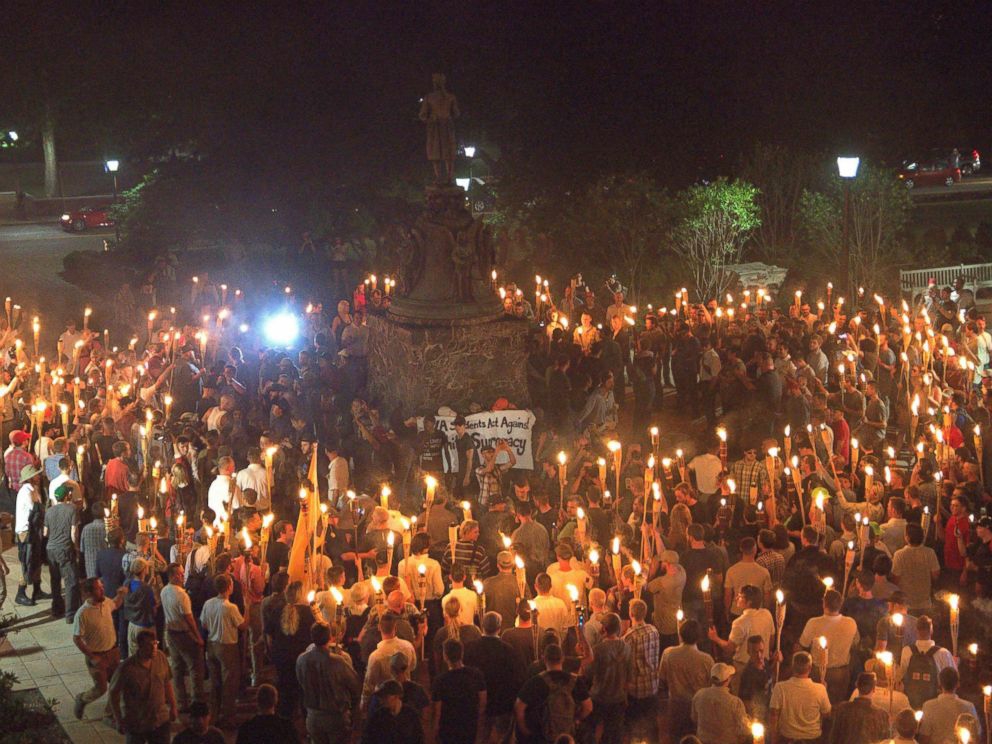 Several CEOs have left or were planning to leave President Trump's business advisory councils after his response to the Charlottesville, VA, incident. President Trump has been stalwart in blaming "both sides" of the protests in Charlottesville, which escalated in violence. For some CEOs, the response wasn't strong enough in condemning white supremacists. In a news conference, President Trump said there was violence among the liberal contingent as well as those wanting to, for example, defend confederate statues. He drew an analogy between George Washington and Thomas Jefferson, who owned slaves, with Robert E. Lee, who led the confederate army during the U.S. civil war.
Several CEOs have left or were planning to leave President Trump's business advisory councils after his response to the Charlottesville, VA, incident. President Trump has been stalwart in blaming "both sides" of the protests in Charlottesville, which escalated in violence. For some CEOs, the response wasn't strong enough in condemning white supremacists. In a news conference, President Trump said there was violence among the liberal contingent as well as those wanting to, for example, defend confederate statues. He drew an analogy between George Washington and Thomas Jefferson, who owned slaves, with Robert E. Lee, who led the confederate army during the U.S. civil war.
Merck chief executive Ken Frazier was the first to resign from the president's manufacturing council. Others filed suit, and still others planned to resign, including Indra Nooyi of Pepsi, Jamie Dimon of JP Morgan, Alex Gorsky of J&J, and Jeff Immelt of GE.
Doug McMillon, Walmart's chief executive, has been vocal and has faced criticism from Walmart customers. In a memo to employees, McMillion explained his position:
As we watched the events and the response from President Trump over the weekend, we too felt that he missed a critical opportunity to help bring our country together by unequivocally rejecting the appalling actions of white supremacists. His remarks today were a step in the right direction and we need that clarity and consistency in the future.
Our country is facing some very difficult issues that require our elected officials, business leaders and community-based organizations to work together. Representing a company with the largest and one of the most diverse groups of associates in the U.S., and an even more diverse customer base of tens of millions of customers, we believe we should stay engaged to try to influence decisions in a positive way and help bring people together. I will continue to strongly advocate on behalf of our associates and customers, and urge our elected officials to do their part to promote a more just, tolerant and diverse society.
Thank you for representing Walmart and our values today -- and every day.
Before another group, inspired by Nooyi of Pepsi, could resign, President Trump decided to disband all of his business advisory councils. The decision is a blow to the president, who prided himself on his business relationships when taking office.
Discussion:
- Did these business leaders do the right thing? Why or why not?
- What did it take for Merck's CEO to take the lead, and for Pepsi's CEO to inspire the next wave? What was at risk for both of them and for other CEOs?
- Besides addressing the Charlottesville situation differently, what could President Trump have done differently to maintain his relationships with these business leaders?
Should We Curse at Work?
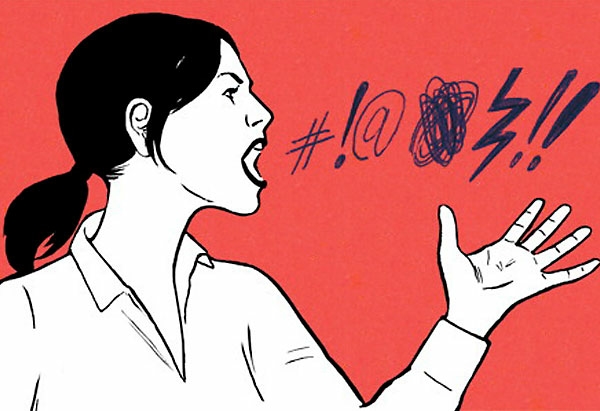 A book, What the F: What Swearing Reveals About Our Language, Our Brains, and Ourselves, explains why cursing is good for us. Author Benjamin K. Bergen also argues that cursing is a social construct: certain words are "bad" only because we say they are.
A book, What the F: What Swearing Reveals About Our Language, Our Brains, and Ourselves, explains why cursing is good for us. Author Benjamin K. Bergen also argues that cursing is a social construct: certain words are "bad" only because we say they are.
Cursing has some benefits. One study showed that swearing in response to an injury helps us tolerate pain. Another showed that swearing improved performance in bicycle and hand-grip exercises. Bergen argues that cursing allows people to show their emotional state instead of hiding it. He also says cursing brings people of similar backgrounds or cultures together.
But what about swearing at work? This seems to vary based on industry, company, and work group. Some cursing, such as ethnic slurs, are offensive and would rarely be tolerated. However, many teams will curse among themselves, depending on the relationships and circumstances.
Discussion:
- Do you curse? Why or why not? Under what circumstances would you curse or avoid it?
- How do you feel about cursing in professional work environments? What are the advantages and disadvantages?
Cargill Muslim Employees Get EEOC Support
 The Equal Employment Opportunity Commission (EEOC) is siding with Cargill employees over their right to pray at work. Employees filed a claim against the company because their opportunities to pray during breaks had been curtailed. The EEOC's support means that Cargill management will have to reach an agreement with employees on prayer time.
The Equal Employment Opportunity Commission (EEOC) is siding with Cargill employees over their right to pray at work. Employees filed a claim against the company because their opportunities to pray during breaks had been curtailed. The EEOC's support means that Cargill management will have to reach an agreement with employees on prayer time.
The issue began in Colorado in 2015 when 150 employees walked off the job in protest. Supervisors told them they would no longer be able to prayer during breaks. The employees were terminated for attendance violations.
Employees report being closely monitored so they didn't pray, for example, in the bathroom. Cargill denies such claims.
The hope is for Cargill and the employees to reach a confidential agreement. If they fail, the employees can pursue a discrimination lawsuit.
Discussion:
- What protects U.S. employees' right to pray at work?
- How would you describe the company's position?
- Assess statements by the company in the Star Tribune article. Based on these quotes, how well is the company responding to the controversy?
Many Perspectives on the Google Memo
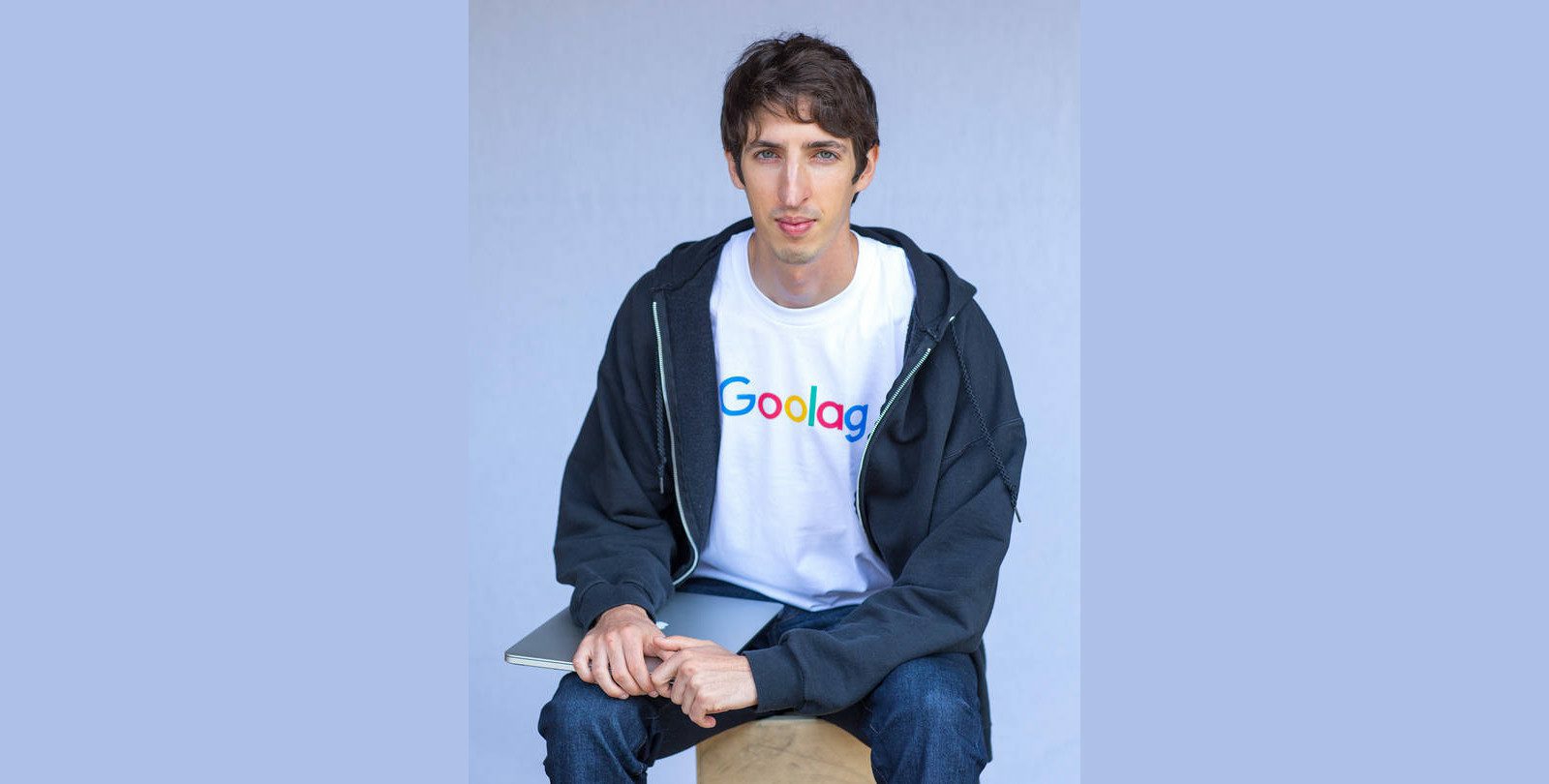 A Google software engineer's memo has further split conservatives and liberals in the workplace. The most divisive part of the 10-page, so-called "manifesto" seems to be the argument that biology partly explains why fewer women are in technology jobs. James Damore was fired following controversy about the memo.
A Google software engineer's memo has further split conservatives and liberals in the workplace. The most divisive part of the 10-page, so-called "manifesto" seems to be the argument that biology partly explains why fewer women are in technology jobs. James Damore was fired following controversy about the memo.
Here are a few highlights of the situation, particularly as they relate to communication:
The Engineer's Point of View
Damore argued in his memo that Google's diversity programs need to be reworked. Titled, "Google's Ideological Echo Chamber," the memo suggests Google de-moralize diversity, stop alienating conservatives, confront Google's biases, stop restricting programs and classes to certain genders or races, have an open and honest discussion about costs and benefits of diversity programs, focus on psychological safety instead of just race/gender diversity, de-emphasize empathy, prioritize intention, be open about the science of human nature, and reconsider making Unconscious Bias (Google's training program) mandatory for promotion committees.
His argument about empathy and claims that women are more neurotic than men seem to be perceived as most hurtful. Damore responded to his termination in a Wall Street Journal editorial.
A computer science lecturer at Stanford acknowledges that the memo cites some peer-reviewed studies. But she identifies fives reasons the memo is offensive to women in tech: fatigue (tired of hearing the arguments and feeling dismissed at work), resisting the divide-and-conquer strategy (women won't feel better if they aren't "average"), Google isn't average (yet Damore cites studies of averages), race is argued alongside gender (but Damore cites no research), and contradiction (he says he values diversity yet criticizes all of Google's programs).
In sum, women argue that technology is a challenging field filled with bias. The memo only hurts women's attempts to be valued and included in the workplace.
Google Leadership's Response
Google leadership had a right to terminate Damore. The question is whether this was the best decision. By posting his memo and given the subsequent conversations, Damore may have created a hostile working environment for Google. In an email to staff, CEO Sundar Pichai wrote, "portions of the memo violate our Code of Conduct and cross the line by advancing harmful gender stereotypes in our workplace." The VP of diversity, integrity, and governance-just two weeks on the job-wrote an email with her own perspective.
You can read more about Google's decision process here.
Conservatives' Point of View
Conservatives see this situation as emblematic of what Damore argues: that conservative voices are silenced. Damore called Google "cult-like" for its unwillingness to consider other points of view. Damore has filed suit against the termination. New York Times opinion writer David Brooks wrote that Pichai should resign for terminating Damore.
Discussion:
- From a perspective strictly of persuasion (or argumentation), what did Damore do well in his memo, and where did he fall short? What could he have done differently in this situation?
- To what extent do you agree with Damore's arguments? What are his strongest and weakest arguments?
- Did Google do the right thing in firing him? What are the arguments for and against his termination?
Line Chart Example
A New York Times article and corresponding charts show how income inequality has increased. In 1980, low- and middle-income people saw healthy increases in income growth. In 2014, those in the lower income percentiles saw the least growth, while the highest income earners saw the most growth.
The chart is different from a traditional line chart, which shows change over time. Each line, in this example, represents one year, and the X axis represents income level. It's effective because we see the dramatic difference between the two sample years, with a notable intersection around the 95th percentile and then a steep curve up for the very wealthy.
The Times, of course, tends to be a liberal paper, and the message is clearly anti-Trump's tax policies, but the chart illustrates the point well.
Additional charts show changes over time, and the Times calls this piece "interactive." The lines move, but "interactive" may be an overstatement.
Discussion:
- What main points do you take away from the chart?
- What's missing from the chart? How might Republicans who promote tax breaks for the wealthy argue with the representation?
- What other visuals could be useful to illustrate the points?
- How could you make the charts more interactive?
Irvine Finds Room for Admitted Students
 University of California, Irvine, is trying to do right by 800 students who accepted the college's admissions offer above the expected number. When making admissions decisions, colleges always consider their "yield," or the percentage of students who will enroll. Admissions officers admit more students than they have space for, assuming some won't come because of financial reasons or school preference.
University of California, Irvine, is trying to do right by 800 students who accepted the college's admissions offer above the expected number. When making admissions decisions, colleges always consider their "yield," or the percentage of students who will enroll. Admissions officers admit more students than they have space for, assuming some won't come because of financial reasons or school preference.
Initially, Irvine rescinded offers from about 500 students, but it was too late for them to enroll in other schools by that time. They informed students during the summer about transcript and other issues, which happens in a few cases each year, but this is an extraordinary number.
Then university administrators began softening. They admitted that they used standards that were too strict in order to lower their enrollment numbers. The vice chancellor wrote a message to students, including this excerpt:
We heard from some students that this year's process was too stringent and our customer-service approach needs improvement. I acknowledge that we took a harder line on the terms and conditions this year and we could have managed that process with greater care, sensitivity, and clarity about available options. Also contributing to the angst many of you have experienced is our traditional communication and outdated telephone systems that did not serve us well in this circumstance. For those who felt ignored or mistreated, I sincerely apologize.
We are making every effort to do better, immediately. I have directed the admissions team to step up the personal outreach to notified students. We're bringing in more people to review appeals and answer phones. We are committed to correcting any errors swiftly and providing the help you need in an empathetic and understanding way.
A few days later, Irvine's chancellor also apologized, and the university found a way to accommodate 290 more students. His message included this excerpt:
The stories of our students whose college dreams were crushed by our decision to withdraw admissions to hundreds of students are heartbreaking. And unacceptable.
This process is not working. We are a university recognized for advancing the American Dream, not impeding it. This situation is rocking us to our core because it is fundamentally misaligned with our values.
The apology is notable because we see so few of them from university presidents. Writers for The New York Times and Insider Higher Ed commented on the rarity of apologies, partly because of the complexity of academic institutions.
Discussion:
- Analyze the chancellor's and vice chancellor's messages. What communication principles do they use? How do the messages compare in content, tone, word choice, and organization?
- What should Irvine have done differently in this situation? What are all of the touch points with students that could have been improved?























